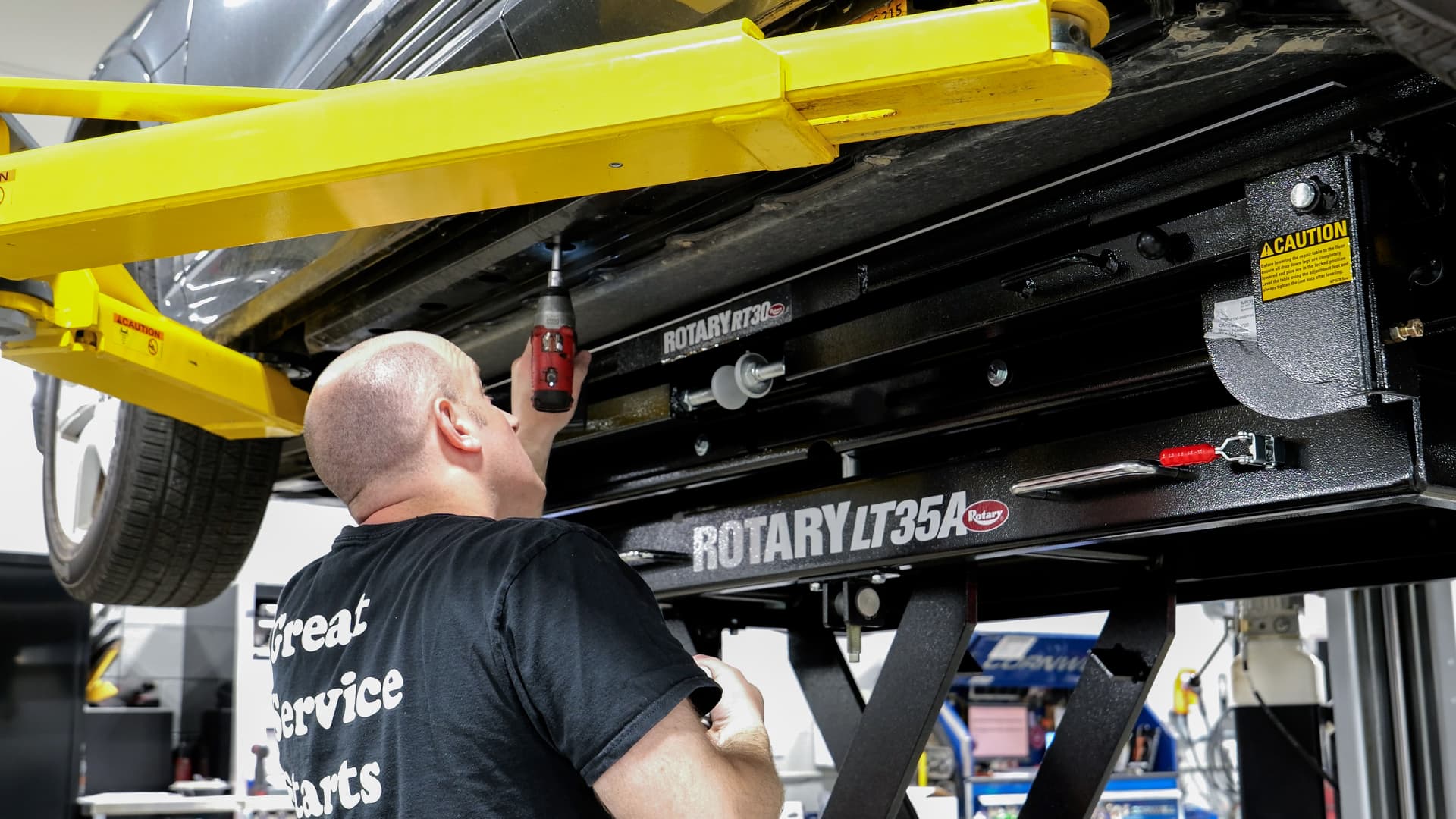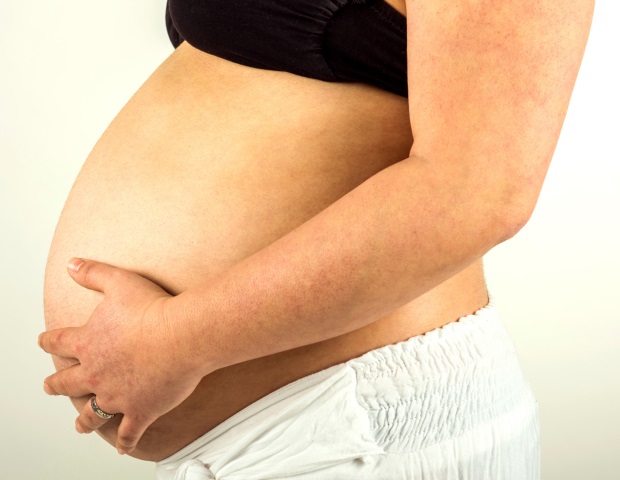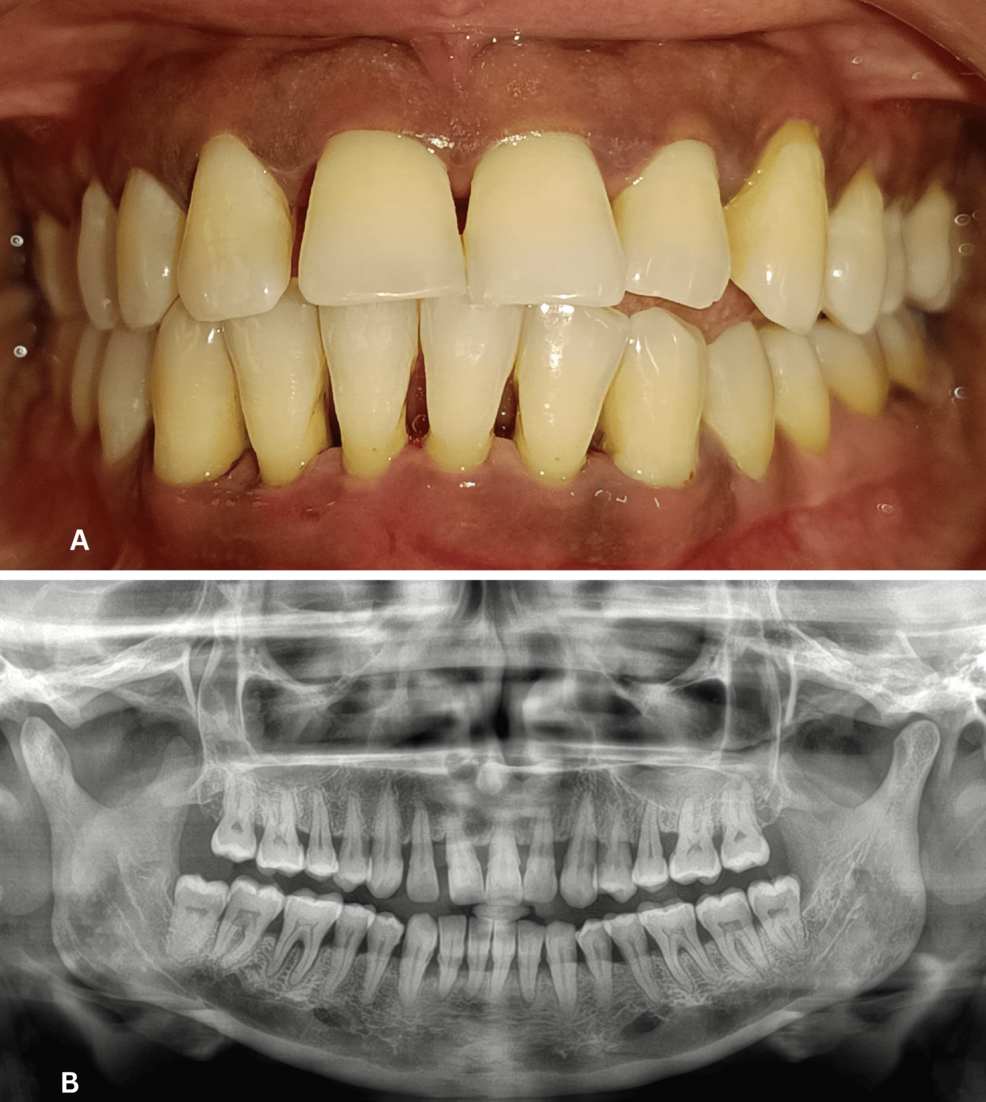Industrial conglomerate Dover reported better-than-expected third-quarter profits Thursday and gave skeptical investors plenty to like, sending the stock up more than 6%. Revenue rose 4.7% year over year to $2.08 billion, missing the consensus of $2.11 billion, according to estimates compiled by LSEG. Adjusted earnings per share (EPS) in the three months ended Sept. 30 totaled $2.62, easily topping the $2.51 consensus, LSEG data showed. On an annual basis, adjusted EPS rose 15.4%. Shares of Dover climbed about 6.8%, to roughly $179 apiece, in Thursday’s session. That has the stock on pace for its second-best day of the year — behind only a 9.7% surge in the everything rally of April 9, when President Donald Trump paused most of his “reciprocal tariffs.” Dover’s stock desperately needed a boost. It entered Thursday’s session down more than 10% this year, trailing both the S & P 500 and the index’s industrial sector. Why we own it We own Dover as an industrial turnaround story with exposure to mega-themes, most notably the data center buildout to support artificial intelligence computing. The company’s key products for data centers are thermal connectors and heat exchangers. Dover’s business serving the biopharma industry is another attractive area. Dover’s active portfolio management and commitment to capital returns sweeten the investment case. Competitors : Ingersoll Rand , IDEX Corp ., Snap-On , Veralto , among others Most recent buy: July 30, 2025 Initiated : May 28, 2024 Bottom line Things are starting to look up. Coming into Thursday’s third-quarter release, Dover had struggled to gain traction this year in a market largely fueled by artificial intelligence excitement, a theme that lifted industrial players like Vertiv and Caterpillar , along with fellow Club names GE Vernova and Eaton , to impressive heights. While Dover has ties to the data center and the AI infrastructure buildout, it’s not as obvious a beneficiary as other industrial players thanks to a wide-ranging business portfolio that serves so many other markets — like can-making, digital printing, vehicle repair, and grocery store refrigeration, to name a few. The latter two businesses, in particular, have been major drags on growth this year, further complicating the Dover investment case. In search of cleaner growth stories within industrials, investors looked past Dover. They’re taking a closer look on Thursday. And rightfully so, considering the company painted an upbeat picture of its ability to benefit from lucrative trends, including AI, demonstrated strong profitability improvements and raised its full-year earnings guidance, and indicated that its sizable cash pile could soon be put to productive uses. “I thought it was a travesty that [the stock] fell this much,” but our patience is finally being rewarded, Jim Cramer said Thursday. DOV 1Y mountain Dover 1-year return We’re reiterating our buy-equivalent 1 rating and price target of $210 on the stock. Even with the strong move Thursday, shares are trading at just over 17 times next year’s consensus earnings. That’s a steep discount to a popular exchange-traded fund of industrial companies, known as the XLI , which trades at roughly 23 times 2026 earnings. Commentary At a very high level, Dover executives nailed the messaging on the company’s exposure to growth markets like data centers, the AI-related rise in electricity consumption, and growing demand for liquified natural gas (LNG) exports. Shifts within the pharmaceutical industry toward more complex biologic therapeutics and the adoption of safer, more efficient single-use components in manufacturing also benefit some of Dover’s businesses. On its earnings slideshow, the company made clear that more than 20% of its annualized revenue is now tied to “secular growth end markets.” And on the conference call, CEO Richard Tobin said these markets are also helping to drive margin expansion. Tobin also offered a detailed explanation of Dover’s ties to these compelling themes, going deeper than its business of selling thermal connectors and heat exchangers to cool server racks and data centers, which has been well-publicized up to this point. For example, Tobin mentioned how its OPW Clean Energy Solutions subsidiary supplies components to gas and steam turbines — a red-hot market, as GE Vernova has made clear — as well as specialized piping used to liquify natural gas, making it easier to ship overseas. LNG export capacity in the U.S. could more than double by 2029, the Energy Information Administration said last week . Tobin also explained how the recently acquired Sikora boosted its exposure to electricity infrastructure because Sikora’s measurement and control technology is used on high-voltage, polymer-coated wires and cables. After being acquired in June, Sikora has “really done fantastically, significantly better than our deal model would’ve incorporated for the base year,” added Tobin. Against that backdrop, Dover’s Pumps & Process Solutions segment — home to single-use biopharma components, thermal connectors, and Sikora — was the standout in the third quarter. Revenues rose 16.6% year over year, bookings grew by 14%, and its adjusted EBITDA margin came in at a better-than-expected 33.2%. Short for earnings before interest, taxes, depreciation, and amortization, EBITDA is a gauge of operating profitability. With Dover making productivity improvements and cost-cutting measures a focus across the company, it was encouraging to see all five segments beat the FactSet consensus for adjusted EBITDA in the quarter. Tobin’s commentary on 2026 was also a highlight. “I’m not aware of any business within the portfolio that’s forecasting down revenue for next year,” he said, adding that it’s “probably the first time” in a couple of years that Dover is not expecting at least one unit to see a cyclical decline. This includes its grocery refrigeration business, where shipments of door cases across the industry are at a 20-year low, Tobin said, as tariff uncertainty caused customers to pause maintenance and replacement spending. “These projects cannot be delayed indefinitely,” Tobin said. And encouragingly, we saw a material acceleration in booking rates in the quarter, which signals volume improvement moving forward.” This business is housed within its Climate & Sustainability Technologies segment, which saw 25% growth in year-over-year bookings in the quarter. The slowdown in refrigeration — not something Dover anticipated at the start of the year — has been a drag on organic growth in 2025 of roughly 1.5 to 2 percentage points, Tobin said. In dollar terms, that amounts to a $140 million to $150 million headwind. “Do we get it all back next year? We’ll see, but I think we’re going to get a significant portion of it back if the Q4 trajectory holds as we go through the end of the year,” Tobin said. Another major problem child in 2025 has been the vehicle service market, contained within Dover’s Engineered Products segment. This includes products like the vehicle lifts and wheel aligners used at the auto repair shop. Encouragingly, Dover is expecting to see a quarter-over-quarter improvement in the fourth quarter. Dover also delivered with its commentary on the company’s cash pile, which grew considerably last year when it sold off its subsidiary that made trash trucks and compactors for $2 billion . Asked directly by JPMorgan’s Steve Tusa whether Dover is considering buying back stock given its depressed valuation, Tobin said: “If you go back and look in the transcript, you’ll see the corporate speak for, ‘We think our shares are cheap, and we’re likely to intervene.'” In August, Dover announced a $500 million share repurchase program, but at the end of September, the company had only spent $40.7 million repurchasing common stock during the first nine months of the year, according to a securities filing Thursday . As for whether Dover might use any of its cash to buy additional companies, Tobin said Dover is “being selective as usual.” However, he continued, “We’ve got enough in the pipeline that I would expect that we’d close on a couple of things over the next 12 months.” Earlier on the conference call, Tobin noted that the majority of Dover’s acquisitions in the past five years have been geared toward the aforementioned faster-growing markets, and he said they “remain top priorities for continued investment.” In the coming quarters, one more potential growth driver for Dover is the pharmaceutical companies that plan to build manufacturing plants in the U.S. to avoid Trump’s tariffs. Not only does Dover sell the single-use pumps and connectors used in drug production, its Imaging & Identification segment sells serialization and traceability software through its Systech subsidiary, acquired in 2020 . Dover expects the entire segment to continue its “long-term steady growth trajectory,” while calling out “additional upside from serialization software.” The serialization software business is “levered almost exclusively to pharma,” Tobin said later on the call. “So, as pharma builds out production lines, that’s when we sell the software and the recurring revenue associated with it. I think that everybody is pretty well aware of what’s going on in … incentivized reshoring of pharma. And I think that we’ll get our fair share of that.” Guidance Here’s Dover’s revised earnings guidance for the full year: EPS in the range of $9.50 to $9.60. The midpoint of $9.55 is ahead of the $9.48 consensus, according to FactSet. That implies fourth-quarter EPS between $2.40 and $2.50. Ahead of Thursday’s results, the FactSet consensus for the fourth quarter stood at $2.49. It continues to forecast full-year 2025 revenue growth in the 4% to 6% range. (Jim Cramer’s Charitable Trust is long DOV. See here for a full list of the stocks.) As a subscriber to the CNBC Investing Club with Jim Cramer, you will receive a trade alert before Jim makes a trade. Jim waits 45 minutes after sending a trade alert before buying or selling a stock in his charitable trust’s portfolio. If Jim has talked about a stock on CNBC TV, he waits 72 hours after issuing the trade alert before executing the trade. THE ABOVE INVESTING CLUB INFORMATION IS SUBJECT TO OUR TERMS AND CONDITIONS AND PRIVACY POLICY , TOGETHER WITH OUR DISCLAIMER . NO FIDUCIARY OBLIGATION OR DUTY EXISTS, OR IS CREATED, BY VIRTUE OF YOUR RECEIPT OF ANY INFORMATION PROVIDED IN CONNECTION WITH THE INVESTING CLUB. NO SPECIFIC OUTCOME OR PROFIT IS GUARANTEED.









